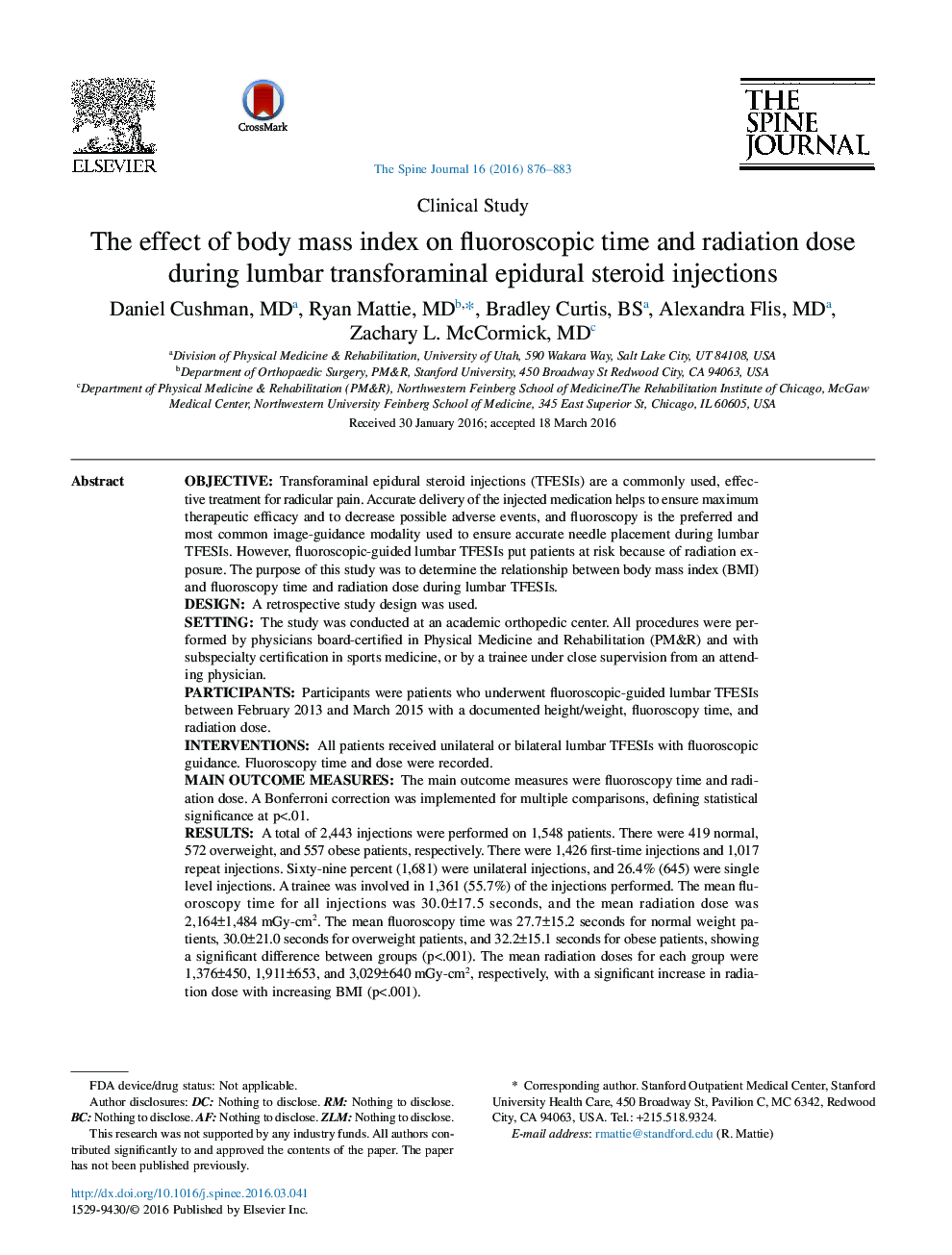| Article ID | Journal | Published Year | Pages | File Type |
|---|---|---|---|---|
| 4096019 | The Spine Journal | 2016 | 8 Pages |
ObjectiveTransforaminal epidural steroid injections (TFESIs) are a commonly used, effective treatment for radicular pain. Accurate delivery of the injected medication helps to ensure maximum therapeutic efficacy and to decrease possible adverse events, and fluoroscopy is the preferred and most common image-guidance modality used to ensure accurate needle placement during lumbar TFESIs. However, fluoroscopic-guided lumbar TFESIs put patients at risk because of radiation exposure. The purpose of this study was to determine the relationship between body mass index (BMI) and fluoroscopy time and radiation dose during lumbar TFESIs.DesignA retrospective study design was used.SettingThe study was conducted at an academic orthopedic center. All procedures were performed by physicians board-certified in Physical Medicine and Rehabilitation (PM&R) and with subspecialty certification in sports medicine, or by a trainee under close supervision from an attending physician.ParticipantsParticipants were patients who underwent fluoroscopic-guided lumbar TFESIs between February 2013 and March 2015 with a documented height/weight, fluoroscopy time, and radiation dose.InterventionsAll patients received unilateral or bilateral lumbar TFESIs with fluoroscopic guidance. Fluoroscopy time and dose were recorded.Main Outcome MeasuresThe main outcome measures were fluoroscopy time and radiation dose. A Bonferroni correction was implemented for multiple comparisons, defining statistical significance at p<.01.ResultsA total of 2,443 injections were performed on 1,548 patients. There were 419 normal, 572 overweight, and 557 obese patients, respectively. There were 1,426 first-time injections and 1,017 repeat injections. Sixty-nine percent (1,681) were unilateral injections, and 26.4% (645) were single level injections. A trainee was involved in 1,361 (55.7%) of the injections performed. The mean fluoroscopy time for all injections was 30.0±17.5 seconds, and the mean radiation dose was 2,164±1,484 mGy-cm2. The mean fluoroscopy time was 27.7±15.2 seconds for normal weight patients, 30.0±21.0 seconds for overweight patients, and 32.2±15.1 seconds for obese patients, showing a significant difference between groups (p<.001). The mean radiation doses for each group were 1,376±450, 1,911±653, and 3,029±640 mGy-cm2, respectively, with a significant increase in radiation dose with increasing BMI (p<.001).ConclusionsThe findings of this study demonstrate that fluoroscopy radiation dose and fluoroscopy time during lumbar TFESIs are increased in patients with an elevated BMI, and in patients of greater age, but the presence of a trainee had no effect on fluoroscopy time.
